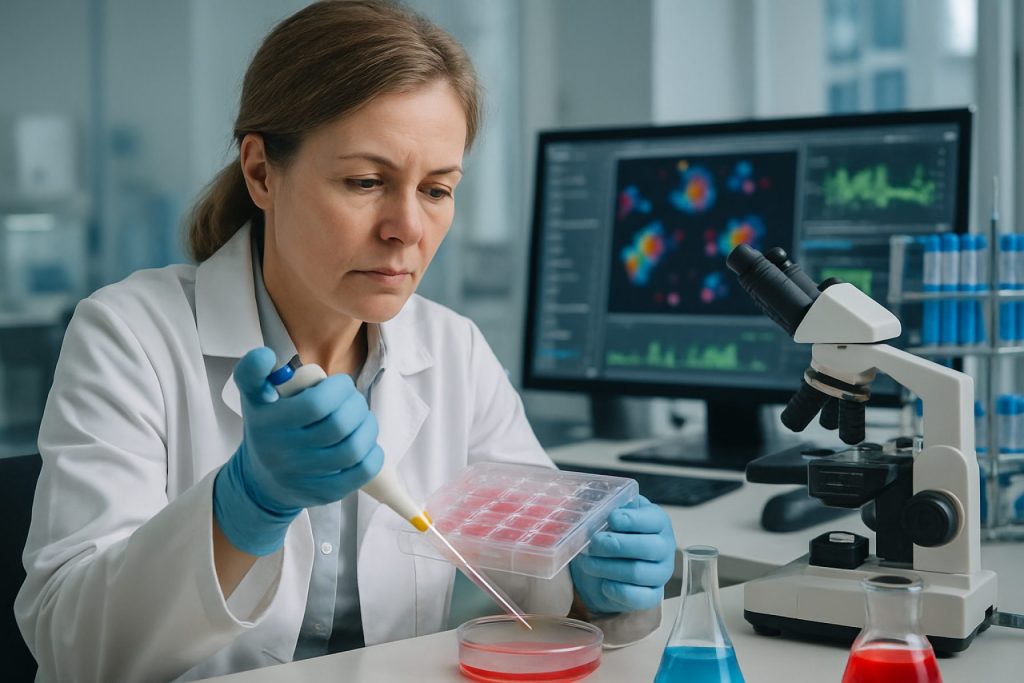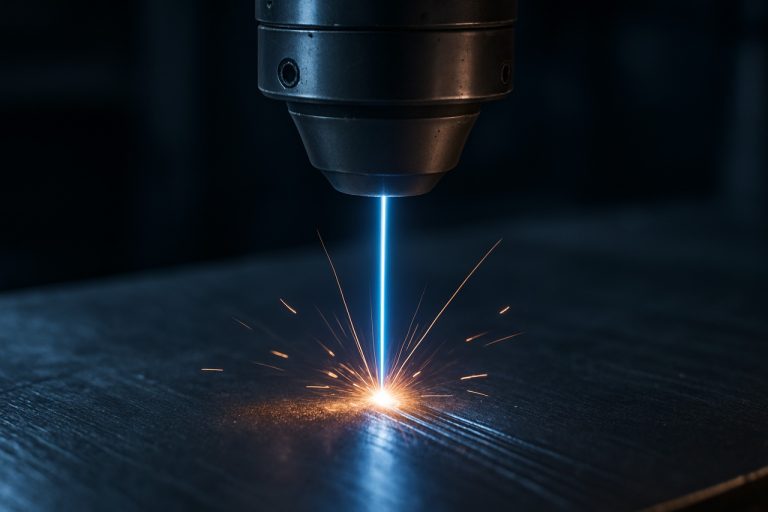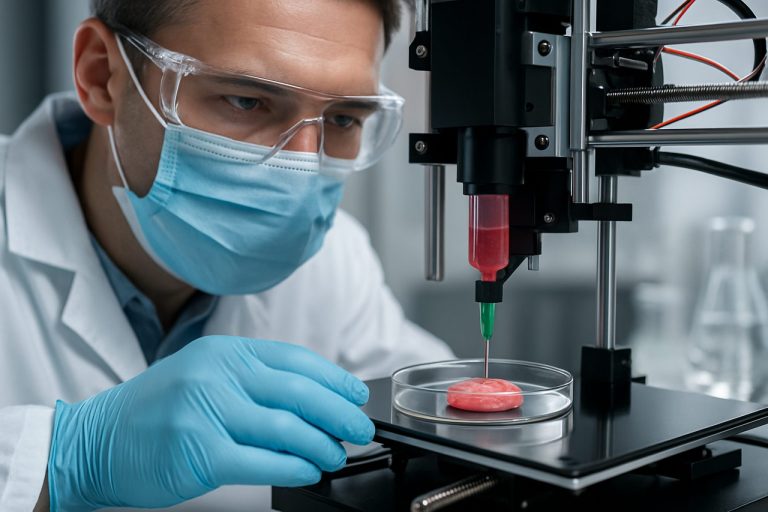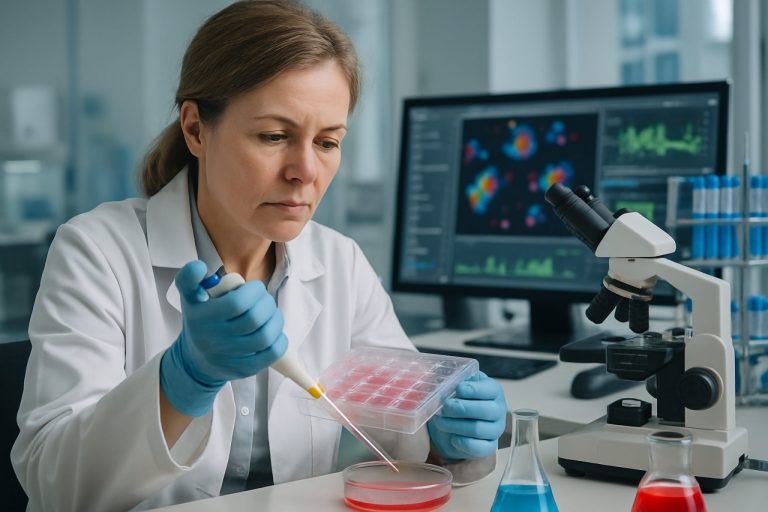
Induced Pluripotent Stem Cell Rejuvenation Therapies in 2025: Transforming Regenerative Medicine and Unlocking New Horizons for Age-Related Disease Treatment
- Executive Summary: iPSC Rejuvenation Therapies Market in 2025
- Technology Overview: Advances in iPSC Rejuvenation Platforms
- Key Players and Strategic Collaborations (e.g., fatebiotech.com, takeda.com, bluebirdbio.com)
- Clinical Pipeline and Regulatory Milestones
- Market Size, Segmentation, and 2025–2030 Growth Forecasts (CAGR: ~18%)
- Emerging Applications: From Age-Related Diseases to Personalized Medicine
- Manufacturing, Scalability, and Quality Control Innovations
- Investment Trends and Funding Landscape
- Challenges: Safety, Ethics, and Regulatory Hurdles
- Future Outlook: Disruptive Potential and Long-Term Industry Impact
- Sources & References
Executive Summary: iPSC Rejuvenation Therapies Market in 2025
The induced pluripotent stem cell (iPSC) rejuvenation therapies market is poised for significant advancement in 2025, driven by accelerating clinical translation, increased investment, and expanding partnerships between biotechnology firms and healthcare providers. iPSC technology, which enables the reprogramming of adult somatic cells into a pluripotent state, is at the forefront of regenerative medicine, offering the potential to generate patient-specific cells for tissue repair, disease modeling, and drug discovery.
In 2025, several leading biotechnology companies are advancing iPSC-based rejuvenation therapies toward clinical application. FUJIFILM Holdings Corporation, through its subsidiary Cellular Dynamics International, remains a global leader in iPSC manufacturing and differentiation, supplying clinical-grade iPSC lines and developing cell therapies for age-related macular degeneration and other degenerative diseases. Takeda Pharmaceutical Company Limited continues to invest in iPSC-derived therapies, particularly in collaboration with academic institutions and startups, to address neurodegenerative and cardiovascular conditions.
Another key player, BlueRock Therapeutics (a subsidiary of Bayer AG), is progressing its iPSC-derived dopaminergic neuron therapy for Parkinson’s disease, with pivotal clinical trials expected to yield interim results in 2025. Sumitomo Pharma Co., Ltd. is also advancing iPSC-based regenerative therapies, focusing on central nervous system disorders and collaborating with research institutes to accelerate clinical translation.
The market outlook for 2025 is shaped by a growing number of clinical trials, regulatory engagement, and the establishment of GMP-compliant manufacturing facilities. The U.S. Food and Drug Administration (FDA) and the European Medicines Agency (EMA) are actively engaging with industry stakeholders to develop regulatory frameworks for iPSC-derived products, aiming to streamline approval pathways while ensuring safety and efficacy. This regulatory clarity is expected to catalyze further investment and commercial activity.
Strategic partnerships and licensing agreements are proliferating, as seen in collaborations between FUJIFILM Holdings Corporation, Takeda Pharmaceutical Company Limited, and academic centers. These alliances are critical for scaling up manufacturing, optimizing differentiation protocols, and expanding therapeutic indications. Additionally, the emergence of specialized contract development and manufacturing organizations (CDMOs) focused on iPSC technologies is facilitating broader market access and reducing barriers for smaller biotech entrants.
Looking ahead, the iPSC rejuvenation therapies market in 2025 is characterized by robust clinical activity, increasing regulatory support, and a dynamic ecosystem of industry leaders and innovators. The next few years are expected to witness the first commercial approvals of iPSC-derived rejuvenation therapies, setting the stage for broader adoption and transformative impacts on age-related and degenerative diseases.
Technology Overview: Advances in iPSC Rejuvenation Platforms
Induced pluripotent stem cell (iPSC) rejuvenation therapies are at the forefront of regenerative medicine, leveraging the unique ability of iPSCs to revert adult somatic cells to a pluripotent state. This technology enables the generation of patient-specific cells for tissue repair, disease modeling, and drug discovery. In 2025, the field is witnessing significant technological advances, particularly in the efficiency, safety, and scalability of iPSC reprogramming and differentiation platforms.
A major breakthrough has been the refinement of non-integrating reprogramming methods, such as episomal vectors and mRNA-based approaches, which minimize the risk of insertional mutagenesis and improve the clinical safety profile of iPSC-derived products. Companies like FUJIFILM Corporation (through its subsidiary Cellular Dynamics International) and Takeda Pharmaceutical Company Limited are leading the development of GMP-compliant iPSC lines and manufacturing processes, enabling the production of high-quality, clinical-grade cells for therapeutic applications.
Another key advance is the emergence of rejuvenation protocols that not only reprogram cells to pluripotency but also reset cellular aging markers, such as telomere length and epigenetic signatures. This has been demonstrated in preclinical studies and is now being translated into early-stage clinical pipelines. BlueRock Therapeutics, a subsidiary of Bayer AG, is actively developing iPSC-derived cell therapies for neurodegenerative and cardiovascular diseases, with a focus on restoring youthful cell function and improving long-term engraftment.
Automation and artificial intelligence (AI) are increasingly integrated into iPSC platforms to enhance reproducibility and reduce costs. Lonza Group AG and Thermo Fisher Scientific Inc. are providing automated cell culture systems and reagents tailored for iPSC expansion and differentiation, supporting both research and clinical manufacturing. These technologies are expected to accelerate the transition of iPSC rejuvenation therapies from laboratory to clinic over the next few years.
Looking ahead, the outlook for iPSC rejuvenation platforms is promising. Ongoing collaborations between biopharma companies, academic centers, and regulatory agencies are streamlining the path to commercialization. The next few years are likely to see the initiation of additional clinical trials targeting age-related diseases, with the potential for the first iPSC-based rejuvenation therapies to reach the market by the late 2020s. As manufacturing and quality control technologies mature, iPSC rejuvenation therapies are poised to become a cornerstone of personalized regenerative medicine.
Key Players and Strategic Collaborations (e.g., fatebiotech.com, takeda.com, bluebirdbio.com)
The landscape of induced pluripotent stem cell (iPSC) rejuvenation therapies in 2025 is shaped by a dynamic interplay of established biopharmaceutical companies, innovative startups, and strategic collaborations. These entities are driving the translation of iPSC-based rejuvenation science into clinical and commercial realities, with a focus on age-related diseases, regenerative medicine, and cellular therapies.
Among the most prominent players, Fate Therapeutics stands out for its pioneering work in iPSC-derived cellular immunotherapies. The company’s proprietary platform enables the generation of off-the-shelf, engineered cell products, with several candidates in clinical trials targeting hematologic malignancies and solid tumors. Fate’s approach leverages the rejuvenative potential of iPSCs to create functionally youthful immune cells, a strategy that is being closely watched for its implications in broader regenerative applications.
Another key participant, Takeda Pharmaceutical Company, has expanded its regenerative medicine portfolio through both internal R&D and external partnerships. Takeda’s collaborations with academic institutions and biotech firms focus on harnessing iPSC technology for tissue regeneration and the treatment of degenerative diseases. The company’s global reach and manufacturing capabilities position it as a central figure in scaling iPSC-based therapies for clinical use.
bluebird bio, traditionally known for its gene therapy expertise, has entered the iPSC space through strategic alliances and technology acquisitions. The company is exploring the integration of gene editing with iPSC-derived cell therapies, aiming to address genetic and age-related disorders with a rejuvenative approach. This convergence of gene and cell therapy platforms is expected to accelerate the development of next-generation rejuvenation treatments.
Strategic collaborations are a hallmark of the sector’s current momentum. Partnerships between biotechs, large pharma, and academic centers are facilitating the sharing of proprietary iPSC lines, manufacturing know-how, and clinical trial infrastructure. For example, alliances between Takeda Pharmaceutical Company and leading research institutes are advancing preclinical and early clinical studies in iPSC-based tissue repair and rejuvenation.
Looking ahead, the next few years are likely to see further consolidation and cross-sector partnerships, as companies seek to overcome challenges related to scalability, regulatory approval, and long-term safety. The entry of additional pharmaceutical giants and the maturation of existing collaborations are expected to accelerate the commercialization of iPSC rejuvenation therapies, with the potential to transform the treatment landscape for age-related and degenerative conditions.
Clinical Pipeline and Regulatory Milestones
The clinical pipeline for induced pluripotent stem cell (iPSC) rejuvenation therapies has advanced significantly as of 2025, with several key players progressing toward late-stage clinical trials and regulatory submissions. iPSC-based approaches, which involve reprogramming adult somatic cells to a pluripotent state and then differentiating them into target cell types, are being explored for a range of age-related and degenerative conditions, including neurodegenerative diseases, cardiovascular disorders, and musculoskeletal degeneration.
Among the leaders in this space, Fujifilm—through its subsidiary Cellular Dynamics International—has been at the forefront of developing iPSC-derived cell therapies. Their pipeline includes iPSC-derived retinal pigment epithelial (RPE) cells for age-related macular degeneration (AMD), which have advanced through early-phase clinical trials in Japan. In 2024, Fujifilm announced the expansion of its clinical programs to include iPSC-derived cardiomyocytes for heart failure, with first-in-human studies anticipated in 2025. The company is also investing in manufacturing scale-up and regulatory engagement with the Pharmaceuticals and Medical Devices Agency (PMDA) in Japan and the U.S. Food and Drug Administration (FDA).
Another prominent player, Takeda Pharmaceutical Company, has partnered with academic institutions and biotech firms to accelerate iPSC-based therapies for neurological and hematological disorders. Takeda’s collaboration with Kyoto University has yielded promising preclinical data for iPSC-derived dopaminergic neurons targeting Parkinson’s disease, with a Phase I/II trial expected to report interim results in late 2025. The company is also working closely with regulatory authorities to establish quality and safety standards for iPSC-derived products.
In the United States, Blueprint Bio and Vertex Pharmaceuticals are exploring iPSC-derived cell therapies for diabetes and genetic blood disorders, respectively. Vertex, in particular, is leveraging its expertise in cell therapy manufacturing and gene editing to develop iPSC-derived pancreatic islet cells, with a clinical trial application under review by the FDA as of early 2025.
Regulatory agencies are increasingly providing guidance for iPSC-based therapies, with the FDA and PMDA issuing draft frameworks for the evaluation of cell source, genetic stability, and long-term safety. The next few years are expected to see pivotal trial initiations, expanded indications, and the first potential regulatory approvals for iPSC rejuvenation therapies, marking a transformative period for regenerative medicine.
Market Size, Segmentation, and 2025–2030 Growth Forecasts (CAGR: ~18%)
The global market for induced pluripotent stem cell (iPSC) rejuvenation therapies is poised for robust expansion, with a projected compound annual growth rate (CAGR) of approximately 18% from 2025 to 2030. This growth is driven by accelerating clinical translation, increasing investment from both public and private sectors, and the emergence of new therapeutic applications targeting age-related diseases, regenerative medicine, and personalized cell therapies.
In 2025, the iPSC rejuvenation therapy market is segmented by application (regenerative medicine, drug discovery and development, disease modeling, and cell-based therapies), end user (hospitals, research institutes, biotechnology and pharmaceutical companies), and geography (North America, Europe, Asia-Pacific, and Rest of World). The regenerative medicine segment is expected to dominate, fueled by ongoing clinical trials and early commercial launches targeting conditions such as neurodegenerative diseases, cardiovascular disorders, and musculoskeletal degeneration.
North America currently leads the market, underpinned by a strong ecosystem of academic research, biopharmaceutical innovation, and regulatory support. The United States, in particular, is home to pioneering companies such as FUJIFILM Corporation (through its subsidiary Cellular Dynamics International), which is advancing iPSC-derived cell therapies for age-related macular degeneration and other indications. Takeda Pharmaceutical Company Limited is also active in the space, collaborating on iPSC-based regenerative medicine programs. In Europe, Evotec SE is a notable player, leveraging its iPSC platform for drug discovery and disease modeling, while expanding into therapeutic applications.
Asia-Pacific is anticipated to witness the fastest growth through 2030, driven by increasing R&D investments, supportive government initiatives, and a rapidly expanding biotechnology sector. Japan, in particular, has established itself as a global leader in iPSC research and clinical translation, with organizations such as RIKEN and Kyocera Corporation actively developing and commercializing iPSC-based rejuvenation therapies.
Looking ahead, the market outlook remains highly favorable. The anticipated approval of the first iPSC-based rejuvenation therapies for specific indications by 2027–2028 is expected to catalyze further investment and adoption. Key growth drivers include advances in reprogramming technologies, improved manufacturing scalability, and the integration of artificial intelligence for cell characterization and quality control. Strategic partnerships between biopharma companies and academic institutions are likely to accelerate clinical development and commercialization, further propelling market expansion through 2030.
Emerging Applications: From Age-Related Diseases to Personalized Medicine
Induced pluripotent stem cell (iPSC) rejuvenation therapies are rapidly transitioning from experimental platforms to tangible clinical applications, particularly in the context of age-related diseases and personalized medicine. As of 2025, several biotechnology companies and research institutions are advancing iPSC-based interventions, leveraging their unique ability to reprogram adult somatic cells into a pluripotent state, effectively “resetting” cellular age and function.
A major focus is on neurodegenerative disorders such as Parkinson’s and Alzheimer’s disease. Companies like FUJIFILM Cellular Dynamics, Inc.—a subsidiary of FUJIFILM Corporation—are at the forefront, developing iPSC-derived dopaminergic neurons for transplantation therapies. Early-stage clinical trials are underway in Japan and the United States, with preliminary data suggesting improved motor function and safety profiles in Parkinson’s patients. Similarly, Takeda Pharmaceutical Company Limited is collaborating with academic partners to explore iPSC-derived cell therapies for neurodegeneration and other age-related conditions.
Cardiovascular disease is another promising area. Asterias Biotherapeutics and FUJIFILM Cellular Dynamics, Inc. are developing iPSC-derived cardiomyocytes for myocardial repair following heart attacks. Preclinical studies have demonstrated the potential for these cells to engraft and restore contractile function in damaged heart tissue, with first-in-human trials anticipated within the next few years.
In the realm of personalized medicine, iPSC technology enables the creation of patient-specific cell lines, allowing for tailored drug screening and toxicity testing. FUJIFILM Cellular Dynamics, Inc. supplies iPSC-derived cell products to pharmaceutical companies for high-throughput screening, expediting the identification of effective therapeutics with reduced risk of adverse reactions. Additionally, Blueprint Bio is utilizing iPSC platforms to develop precision diagnostics and regenerative therapies, aiming to match patients with optimal interventions based on their unique cellular profiles.
Looking ahead, the next few years are expected to see the expansion of iPSC rejuvenation therapies into broader indications, including musculoskeletal disorders, diabetes, and age-related macular degeneration. Regulatory agencies in the US, EU, and Japan are actively engaging with industry leaders to establish frameworks for the safe and ethical deployment of these therapies. As manufacturing scalability and quality control improve, iPSC-based rejuvenation is poised to become a cornerstone of regenerative and personalized medicine, offering hope for the treatment—and even reversal—of age-related decline.
Manufacturing, Scalability, and Quality Control Innovations
The manufacturing, scalability, and quality control of induced pluripotent stem cell (iPSC) rejuvenation therapies are undergoing rapid transformation as the field moves toward clinical and commercial viability in 2025 and beyond. A central challenge has been the development of robust, reproducible, and cost-effective processes for generating clinical-grade iPSCs at scale, while ensuring stringent quality and safety standards.
Several industry leaders are advancing automated, closed-system bioprocessing platforms to address these needs. FUJIFILM Corporation, through its subsidiary FUJIFILM Diosynth Biotechnologies, has invested heavily in modular manufacturing suites and digital process controls, enabling scalable production of iPSC-derived products with minimized contamination risk. Their facilities are designed to comply with global Good Manufacturing Practice (GMP) standards, supporting both autologous and allogeneic cell therapy pipelines.
Similarly, Lonza Group has expanded its cell and gene therapy manufacturing capabilities, offering end-to-end solutions from iPSC derivation to differentiation and final product formulation. Lonza’s proprietary Cocoon™ platform exemplifies the shift toward automated, closed-system manufacturing, which is critical for reducing batch-to-batch variability and labor costs. These innovations are expected to accelerate the transition from small-scale clinical batches to commercial-scale production in the coming years.
Quality control remains a top priority, with companies implementing advanced analytics and real-time monitoring. Thermo Fisher Scientific provides integrated solutions for in-process monitoring, including flow cytometry and next-generation sequencing, to ensure the genetic stability, purity, and potency of iPSC-derived products. The adoption of artificial intelligence and machine learning for process analytics is also gaining traction, enabling predictive quality assurance and early detection of deviations.
Standardization efforts are being coordinated by industry consortia such as the International Society for Cell & Gene Therapy, which is working with regulatory agencies to harmonize quality benchmarks and release criteria for iPSC-based therapies. These collaborative initiatives are expected to streamline regulatory approvals and facilitate global market access.
Looking ahead, the convergence of automation, digitalization, and standardized quality frameworks is poised to make iPSC rejuvenation therapies more accessible and affordable. As manufacturing platforms mature and regulatory pathways clarify, the sector is likely to see a surge in late-stage clinical trials and the first commercial launches of iPSC-based rejuvenation products within the next few years.
Investment Trends and Funding Landscape
The investment landscape for induced pluripotent stem cell (iPSC) rejuvenation therapies is experiencing significant momentum as of 2025, driven by both the maturation of iPSC technologies and the growing interest in regenerative medicine. Over the past year, venture capital, strategic partnerships, and public funding have converged to accelerate the translation of iPSC-based rejuvenation therapies from preclinical research to early-stage clinical trials.
Several leading biotechnology companies are at the forefront of this trend. FUJIFILM Holdings Corporation, through its subsidiary FUJIFILM Cellular Dynamics, Inc., continues to attract substantial investment for its iPSC-derived cell therapy platforms, with a focus on age-related degenerative diseases. The company has announced expanded manufacturing capabilities and new collaborations with pharmaceutical partners to scale up clinical-grade iPSC production. Similarly, BlueRock Therapeutics, a subsidiary of Bayer AG, has secured additional funding to advance its pipeline of iPSC-derived therapies targeting neurodegenerative and cardiovascular conditions, with rejuvenation applications under active investigation.
In the United States, the National Institutes of Health (NIH) continues to be a major source of grant funding for iPSC research, including projects specifically aimed at cellular rejuvenation and age reversal. The NIH’s Regenerative Medicine Innovation Project has allocated new funds in 2024–2025 to support translational studies and early-phase clinical trials utilizing iPSC-derived products. In parallel, the California Institute for Regenerative Medicine (CIRM) has announced new rounds of funding for companies and academic groups developing iPSC-based rejuvenation therapies, with a focus on scalable manufacturing and regulatory readiness.
Private investment is also robust. Startups such as NewLimit are raising significant venture capital to develop iPSC-based interventions aimed at cellular rejuvenation and extending healthy lifespan. NewLimit, co-founded by prominent technology entrepreneurs, has publicly disclosed multi-million dollar funding rounds and is actively recruiting scientific talent to accelerate its research programs. Other emerging players, including bit.bio, are leveraging synthetic biology and iPSC technologies to create rejuvenated cell types for therapeutic use, attracting both equity investment and strategic partnerships.
Looking ahead, the next few years are expected to see continued growth in investment, particularly as early clinical data emerges and regulatory pathways for iPSC-based rejuvenation therapies become clearer. The sector’s funding landscape is likely to be shaped by a combination of large-scale public grants, increased corporate venture activity, and the entry of new institutional investors seeking exposure to the rapidly evolving field of cellular rejuvenation.
Challenges: Safety, Ethics, and Regulatory Hurdles
The rapid advancement of induced pluripotent stem cell (iPSC) rejuvenation therapies has brought significant promise for regenerative medicine, but it also presents a complex landscape of safety, ethical, and regulatory challenges as of 2025 and looking ahead. One of the foremost safety concerns is the risk of tumorigenicity. iPSCs, by their very nature, possess the ability to differentiate into any cell type, but this pluripotency also raises the risk of forming teratomas or other unwanted cell growths if undifferentiated cells are inadvertently transplanted. Companies such as Fujifilm (through its subsidiary Cellular Dynamics International) and Takeda Pharmaceutical Company are actively developing protocols to enhance the safety profile of iPSC-derived products, including rigorous purification and quality control steps to minimize these risks.
Another major challenge is immunogenicity. While iPSCs can theoretically be derived from a patient’s own cells, reducing the risk of immune rejection, practical and economic considerations have led to the development of allogeneic iPSC banks. Organizations like RIKEN in Japan are pioneering the creation of iPSC stock banks with homozygous HLA types to serve broader populations, but the long-term immunological safety of these approaches remains under close scrutiny.
Ethical considerations continue to be a focal point in the deployment of iPSC therapies. Unlike embryonic stem cells, iPSCs circumvent many of the controversies associated with the destruction of embryos. However, concerns persist regarding the potential for genetic manipulation, the creation of gametes, and the use of iPSCs in human enhancement. Regulatory bodies are closely monitoring these developments, with agencies such as the U.S. Food and Drug Administration (FDA) and the European Medicines Agency (EMA) updating guidelines to address the unique risks and ethical questions posed by iPSC-based interventions.
Regulatory hurdles remain significant. The complexity of manufacturing, quality assurance, and traceability for iPSC-derived products requires robust oversight. In Japan, the Pharmaceuticals and Medical Devices Agency (PMDA) has established a fast-track approval process for regenerative medicines, which has enabled early clinical applications by groups like Fujifilm and RIKEN. However, harmonization of standards across regions is still lacking, and the next few years are expected to see increased international collaboration to establish unified frameworks for clinical trials, product approval, and post-market surveillance.
Looking forward, the field is poised for cautious but steady progress. The ongoing efforts by industry leaders and regulatory agencies to address safety, ethical, and regulatory challenges will be critical in determining the pace and scope of iPSC rejuvenation therapy adoption worldwide.
Future Outlook: Disruptive Potential and Long-Term Industry Impact
The future outlook for induced pluripotent stem cell (iPSC) rejuvenation therapies is marked by significant disruptive potential and the promise of long-term industry transformation. As of 2025, the field is transitioning from preclinical innovation to early-stage clinical applications, with several companies and research institutions advancing iPSC-based rejuvenation strategies toward commercialization.
Key players such as FUJIFILM Holdings Corporation (through its subsidiary Cellular Dynamics International), Takeda Pharmaceutical Company Limited, and Asterias Biotherapeutics are actively developing iPSC-derived cell therapies targeting age-related degeneration, tissue repair, and chronic diseases. FUJIFILM Holdings Corporation has invested heavily in scalable iPSC manufacturing platforms, aiming to supply clinical-grade cells for both autologous and allogeneic applications. Meanwhile, Takeda Pharmaceutical Company Limited is collaborating with academic partners to accelerate the translation of iPSC rejuvenation science into regenerative medicine products.
The disruptive potential of iPSC rejuvenation therapies lies in their ability to generate patient-specific or universal donor cells that can replace or repair aged, damaged, or dysfunctional tissues. This approach could fundamentally alter the treatment paradigm for a range of age-associated conditions, including neurodegenerative diseases, cardiovascular disorders, and musculoskeletal degeneration. The scalability and versatility of iPSC technology also position it as a cornerstone for future personalized medicine and tissue engineering solutions.
In the next few years, the industry is expected to see the initiation and completion of pivotal clinical trials evaluating the safety and efficacy of iPSC-derived rejuvenation therapies. Regulatory agencies in the US, Europe, and Asia are increasingly engaging with developers to establish frameworks for the approval and oversight of these advanced therapies. The establishment of standardized manufacturing protocols and quality control measures by organizations such as the International Society for Cell & Gene Therapy is anticipated to facilitate broader adoption and commercialization.
Long-term, the impact of iPSC rejuvenation therapies could extend beyond disease treatment to preventative interventions, potentially delaying the onset of age-related decline. As manufacturing costs decrease and clinical data accumulates, these therapies may become accessible to larger patient populations. The convergence of iPSC technology with gene editing and biomaterials is also expected to drive next-generation rejuvenation products, further expanding the industry’s reach and societal impact.
Sources & References
- Takeda Pharmaceutical Company Limited
- Thermo Fisher Scientific Inc.
- Takeda Pharmaceutical Company
- bluebird bio
- Vertex Pharmaceuticals
- Evotec SE
- Asterias Biotherapeutics
- FUJIFILM Diosynth Biotechnologies
- International Society for Cell & Gene Therapy
- National Institutes of Health
- California Institute for Regenerative Medicine
- NewLimit
- bit.bio



